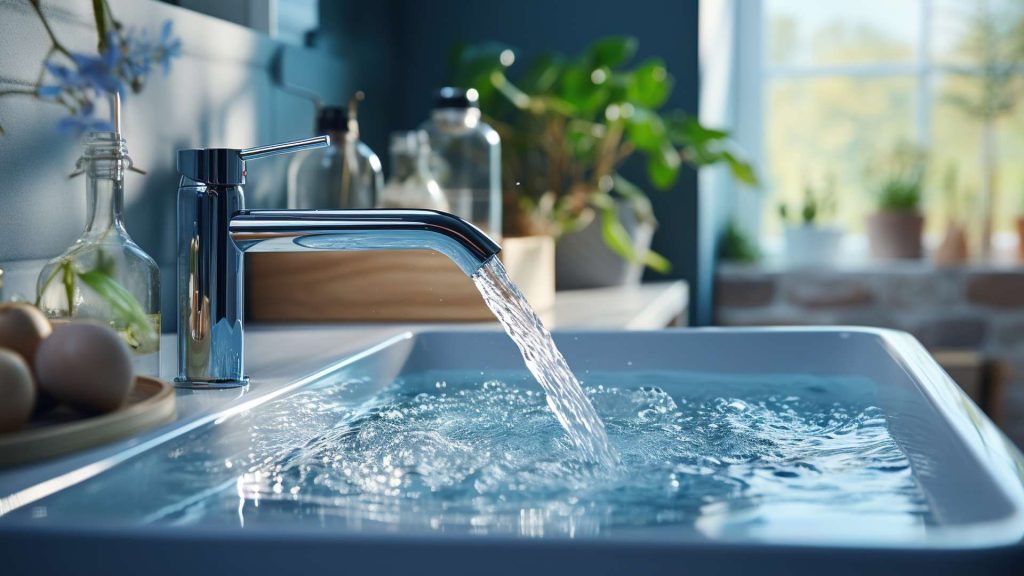Copper is the most popular metal for plumbing in houses, valued for its durability, corrosion resistance, and ability to handle high temperatures.
Plumbing is a crucial component of any residential structure, ensuring the efficient and safe distribution of water throughout the home, as well as the disposal of wastewater. Over the years, the materials used for plumbing pipes have evolved, driven by advancements in technology, changes in regulations, and a deeper understanding of material science. This article delves into the various metals that have been and are currently used in residential plumbing, examining their properties, uses, and how preferences have shifted over time.
The Different Types of Metal Used for Pipework in Houses
Copper
Copper has been a longstanding favourite for plumbing systems in houses due to its durability, reliability, and natural resistance to bacteria. It’s particularly favoured for hot and cold water pipes and for supplying gas. Copper pipes come in two main types: rigid and flexible. The former is often used for water supply lines, while the latter is more suited for tight spaces. The primary benefits of copper include its long lifespan, which can exceed 50 years, and its ability to withstand high temperatures. However, the cost of copper has led homeowners and builders to consider alternative materials in recent years.
Galvanised Steel
Galvanised steel pipes were commonly used in older homes for their strength and durability. These pipes are steel coated with a protective layer of zinc to prevent rust and corrosion. While galvanised pipes were popular for decades, they have fallen out of favour due to the potential for the inner lining to corrode and accumulate rust over time, leading to reduced water pressure and water quality issues.
Stainless Steel
Although less common due to its higher cost, stainless steel piping is used in areas prone to corrosion and in coastal regions. Stainless steel pipes are known for their strength, resistance to corrosion, and longevity. They are often used for both water supply and gas lines in high-end constructions or special applications where their attributes justify the expense.
Brass
Brass, an alloy of copper and zinc, offers excellent corrosion resistance, making it a suitable choice for hot water systems and areas with aggressive water. Brass pipes have a longer lifespan than many other metals and are highly resistant to rust. They are also easier to thread than steel pipes. High-quality brass pipes can last for up to 70 years or more, making them a durable option for plumbing systems.
Evolution of Plumbing Pipe Materials
From Lead to Safer Alternatives
Historically, lead was one of the first metals used for plumbing pipes due to its malleability and resistance to pinhole leaks. However, the severe health risks associated with lead exposure, including its toxic effects on the human nervous system, prompted a shift towards safer materials. Copper emerged as the leading alternative, offering the necessary durability without the health risks. This transition marked a significant improvement in residential plumbing, prioritising public health and safety.
The Shift from Galvanised Steel to Copper and PEX
Galvanised steel pipes, once a staple in residential plumbing for their strength and durability, gradually revealed their Achilles’ heel—corrosion over time. This corrosion led to a multitude of problems, including reduced water quality and flow. The industry’s response was a move towards copper, which, despite its higher cost, provided a non-corrosive, durable solution for water distribution systems. In recent years, cross-linked polyethylene (PEX), a type of plastic, has also gained popularity as an alternative to metal pipes, offering flexibility, cost-effectiveness, and ease of installation. While not a metal, PEX’s rise underscores the ongoing evolution in plumbing materials towards solutions that balance cost, ease of use, and longevity.
Why Modern Metals Are Better
The transition to materials like copper and stainless steel for plumbing applications represents a significant advancement in terms of performance, health, and safety. These materials offer superior resistance to corrosion, longevity, and a negligible impact on water quality, aligning with modern standards for health and environmental protection. Additionally, the adaptability of materials like PEX highlights the industry’s move towards more sustainable, efficient, and cost-effective plumbing solutions.
Looking Ahead: The Future of Plumbing Materials
As we advance, the plumbing industry continues to explore and adopt materials that offer improvements in durability, environmental impact, and health safety. Innovations such as antimicrobial copper alloys and further advancements in polymer technologies promise to shape the future of plumbing in residential constructions. The goal remains to ensure that plumbing systems are safe, efficient, and sustainable, reflecting broader environmental and health priorities.
In conclusion, the metals and materials used in residential plumbing have undergone significant evolution, from the hazardous lead pipes of the past to the durable and safe copper, stainless steel, and alternative materials of today. This evolution reflects not only technological advancements but also a growing commitment to public health, safety, and environmental sustainability. As the industry looks forward, the continued innovation in plumbing materials will undoubtedly contribute to more efficient, safe, and sustainable residential environments.





